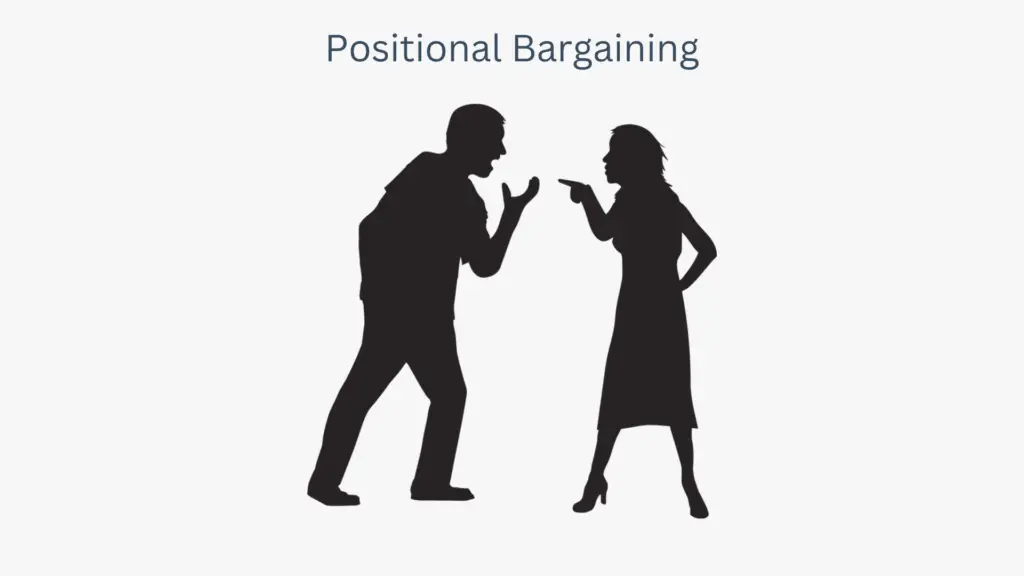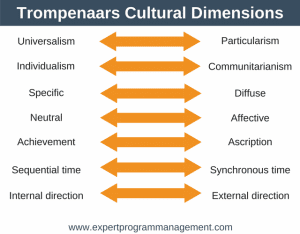The need to negotiate is everywhere. Whether you’re hiring a new employee, requesting a raise, or interacting with your partner or friends, good negotiation skills are a must.
Unfortunately, most people have never learned the art of negotiation and are thus terrible at negotiation.
Background
The Harvard Negotiation Principles came about through the Harvard Negotiation Project (HNP), established in 1979 to improve conflict resolution and negotiation theory and practice.
Later, in 1981, the book “Getting To Yes: Negotiating Agreement Without Giving In,” was written by the two founders of HNP, Roger Fisher and William Ury
The Four Harvard Principles of Negotiation
The four Harvard principles of negotiation are:
- Separate the person from the issue.
- Focus on interests, not positions.
- Generate options for mutual gain.
- Insist on using objective criteria.
Note that the Harvard principles of negotiation are principles and not rules that you must follow. As such you are free to adjust them as much as you feel is appropriate for your situation.
Let’s jump in and take a look at each of the Harvard principles of negotiation in more detail.
1. Separate The Person From The Issue
If you’re anything like most people trying to picture a negotiation, you’ll probably imagine two people head-to-head arguing, each unwilling to give an inch.

Each party has its position and tries to surrender as little as possible. Whoever surrenders least is seen to be the winner. This approach to negotiation is called “positional bargaining.”
Getting To Yes says that positional bargaining is bad because it produces terrible outcomes, is inefficient, and jeopardizes your long-term relationship.
Let’s look at an example to see why. Imagine there’s one orange, and each of our negotiators wants it. They argue about who should own it for a while, eventually deciding they should divide it in half.

But what if one person wanted the orange because they wanted the peel to make a cake, and the other person wanted it because they wanted the seeds to grow orange trees? In this case, it’s easy to see that dividing the orange in two was a suboptimal outcome.
So it’s in your interest to understand the interests of the other party because if you don’t, you may not get what you want. That means that the person you’re dealing with isn’t your enemy but your partner! The first principle of the Harvard principles of negotiation helps you to do exactly this.
To separate the person from the problem, you need to recognize that emotions and ego can stop you from seeing the other party’s position clearly.
Here are some actions you can take to separate the person from the issue:
- Try to understand the other person’s position by imagining yourself in their shoes.
- Allow the other person to let off steam.
- Try to recognize the source of any strong emotions.
- Use active listening techniques to ensure you understand what is being said.
- A negotiation isn’t a debating competition, so when you speak, you should aim to be understood, not to win.
- Build your relationship. It really does help if you can connect with the other side on a personal level. The best time to do this is before the negotiation begins.
To separate the people from the problem, your mindset should be not to win but to better understand the other person’s concerns.
2. Focus On Interests, Not Positions.
Negotiation is not about positions; it’s about resolving the conflict between each side’s interests and concerns.
If each side knew what lay behind the other side’s desire for the orange, they could have reached a much more successful outcome.
Here are some actions you can take to identify the other party’s interests.
- When the other side expresses a position, ask, “Why?”. Explain that you’re doing so to understand their interests and fears. Also, enquire why they have not proposed another seemingly equal position.
- Ask “Why Not?” when the other side rejects one of your proposals.
- Create a list of interests for both sides. Rank them so you understand what’s most important to each side. Update your list as you uncover new information during the negotiation.
- Acknowledge the other side’s interests. If you want them to consider your interests seriously, then an excellent place to start is by showing you understand theirs.
- Explain your interests clearly.
3. Generate Options For Mutual Gain
The key to finding options for mutual gain is understanding that shared interests lie at the heart of negotiation.
When exploring options for mutual gain, there are four traps that people commonly fall into:
- Judging ideas too quickly. Nothing hinders new idea generation more quickly than someone immediately shooting down each idea.
- Trying to narrow your options quickly to find a solution.
- Assuming that the only outcomes are win-lose or lose-win – that is, the size of the pie is fixed, and you can’t both win.
- Ignoring the interests of the other party. Remember that to reach an agreement, you need to create an option that satisfies the other party’s self-interest.
Here are some actions you can take to overcome these traps:
- Separate the creation of ideas from the judgment of them. Aim to focus on generating lots of ideas, and agree not to criticize any of them during this step.
- Try to broaden your options rather than hone in on a single promising option.
- Try to identify mutual gains.
- Look for ways to make the other side’s decision easy. There will be no agreement without finding an option that works for them.
Reconciling Differences
Interests won’t always align nicely, so the key to moving forward when interests differ is to look for interests that are high cost to you but low cost to the other side, and vice versa.
Once you’ve found these interests, the party on the low-cost side should suggest proposals that are appealing to the other side. This process should work in both directions until there are no more interests to negotiate.
4. Insist On Using Objective Criteria
It’s not unusual for two parties to have diametrically opposed interests. To avoid descending into a positional tug-of-war, the final principle of the Harvard principles of negotiation is to use objective criteria to resolve your differences.
Objective criteria are facts that are independent of the people involved in the negotiation but which can affect what should be done in the talks. It tries to take power out of the equation so you don’t give in to authority or pressure.
For example, imagine you are negotiating the price of a used car with a seller. The seller wants the highest price, and you want the lowest. What objective criteria might you use to avoid positional bargaining?
One criterion might be the car’s book value, and maybe you can both agree that it should be taken into consideration. What is another criterion? Maybe you could use what’s common practice in used car deals. That could be adding servicing or other extras into the deal if the book price can’t be agreed upon.
It’s important to note that objective criteria aren’t as powerful as you might like. In our car example, you might ask the seller to agree that book value is an objective criterion, but they can simply say no, and that they want more and think they can get it!
Another issue is using different standards. For example, you could each get your book value number from a different source.
However, objective criteria are still useful for a simple reason. Very often, there’s a simple reason why the other party won’t give you what you want, and that’s simply because you’ve demanded it of them. So introducing objective criteria can be a way to turn the conversation away from positional arguing and towards looking at some other measure.
Yes, But What If…
So far, you might think this all sounds great, but what if the other side doesn’t engage fairly? The Harvard principles of negotiation provide three common ways this can happen and suggests practical approaches to deal with each.
1. When The Other Party Is More Powerful
If the other side is more powerful, then you should spend time developing your BATNA, which stands for the Best Alternative To a Negotiated Agreement.
The better your BATNA, the greater your power. To develop your BATNA, you should:
- Brainstorm a list of alternative actions to take if you don’t reach an agreement.
- Work on improving your best options.
- Select your best option.
It’s crucial to develop your BATNA – you shouldn’t enter a negotiation if you are blind to what you’ll do should you not reach an agreement.
2. When The Other Party Won’t Use Principled Negotiation
This happens when the other party is looking for a win-lose outcome or is making personal attacks. In this case, you can deploy three approaches.
- Don’t allow yourself to be drawn into a confrontation: continue to use principled negotiation.
- Use an approach called Negotiation Jujitsu, which aims to deflect an attacker’s blow rather than absorb it. When the other party attacks you by:
- Asserting their position: reply by asking the reasons behind their position.
- Attacking your ideas: Ask them for more detail on what’s wrong with your ideas.
- Attacking you directly: listen to everything they say and then recast this attack as an attack on the problem.
- Involve a third party to fuse both parties’ underlying interests and draw up a proposal. Allow comments and then redraft the proposal. Continue this process until there is agreement. This is called the one-text approach.
3. When The Other Party Uses Dirty Tricks
Suppose the other party engages in dirty tricks such as leaking information to the press, using pressure tactics, lying, or even deploying a calculated delay. In that case, you can use a three-step approach to handle this.
- Recognize that a dirty tactic has been deployed and choose not to engage with it.
- Call out that a trick has been played to the participants.
- Negotiate about the negotiation: try to agree on the rules by which the negotiation should be conducted.
To Sum Up
Negotiation exists in all aspects of our lives, but most people are terrible negotiators. The Harvard principles of negotiation can help you achieve better negotiations in all aspects of your life.
The best way to improve your negotiation skills is to practice using these techniques regularly. It will be slow progress at first, but eventually, the methods will become second nature.







